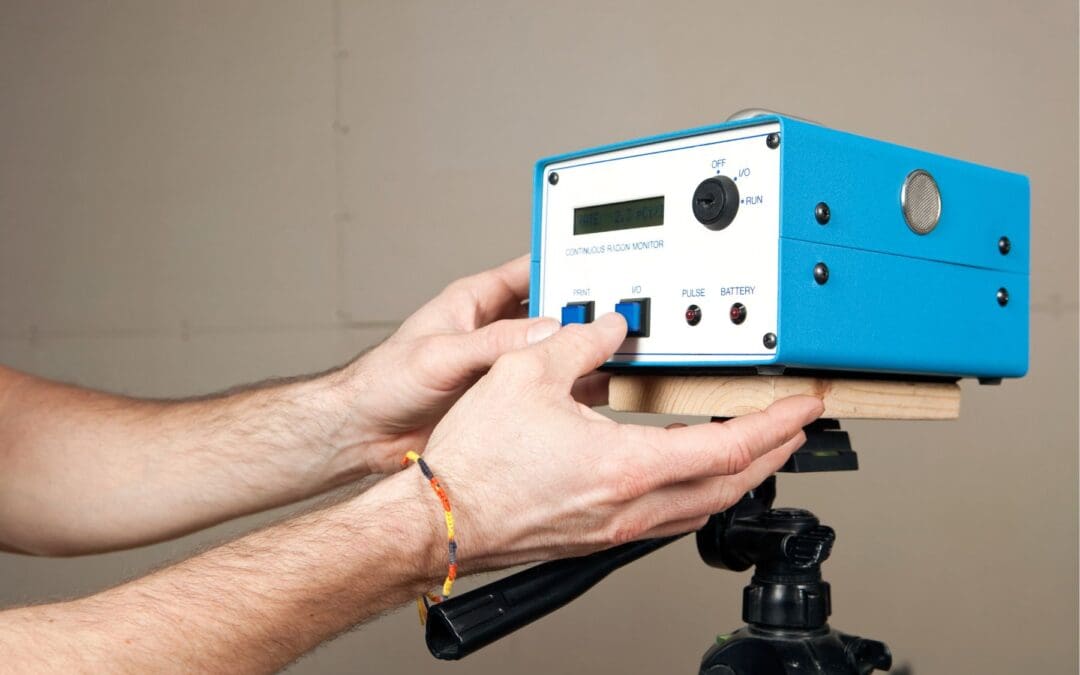Understanding radon in the home begins with knowing what it is: a colorless, odorless, and tasteless radioactive gas. As a natural byproduct of uranium’s decay in the soil, rock, and water beneath your home, radon gas can seep through your foundation and accumulate indoors to dangerous levels. Without a specific test, it’s impossible to detect, making it a silent threat to your family’s health.
Understanding the Invisible Threat: What is Radon, and Why Should You Care?
Radon is the leading cause of lung cancer among non-smokers and the second leading cause overall in the United States. When you breathe in air containing radon, its radioactive particles can get trapped in your lungs. Over time, these particles can release tiny bursts of energy that damage your lung tissue, leading to an increased risk of developing lung cancer.
The danger of radon isn’t an exaggeration. The Environmental Protection Agency (EPA) estimates that radon is responsible for around 21,000 lung cancer deaths each year. While smoking drastically increases the risk of lung cancer from radon exposure, even non-smokers face a significant risk. Because you can’t see or smell radon, it’s easy to assume your home is safe. However, radon can be found in homes in every state, regardless of their age, type, or location.
Testing for Radon: The First and Most Important Step
Testing for radon is simple, affordable, and the only way to know if your family is at risk. You can purchase a DIY test kit from a local hardware store or online, or you can hire a qualified professional to conduct the test for you.
There are two main types of tests: short-term and long-term. A short-term test, which most DIY kits use, measures radon levels for 2 to 90 days. It gives you a quick snapshot and is often the first step in the process. However, because radon levels can vary, a long-term test that lasts more than 90 days provides a more accurate picture of your home’s annual average radon concentration.
For real estate transactions, a professional, short-term test is usually conducted under specific “closed-house” conditions to get a reliable result quickly. If your test result is at or above the EPA’s recommended action level of 4.0 picocuries per liter (pCi/L), remediation will be necessary. Even levels below 4.0 pCi/L still pose a risk and can be reduced.
What to Do if You Have Radon in the Home
If your home’s radon levels are high, the solution is radon mitigation. This process involves reducing the radon concentration in your home through a professionally installed system. The most common and effective method is active soil depressurization. This system uses a fan and a vent pipe to draw radon from beneath the foundation and safely expel it outdoors, away from windows and other openings.
A certified radon mitigation contractor will assess your home and design a system specifically for your needs. The cost of a mitigation system varies, but it’s a worthwhile investment in your family’s health and the value of your property. The goal of a mitigation system is to lower the radon level to below 4.0 pCi/L. After a system is installed, it is crucial to retest to confirm that it’s working properly.
Radon in the Home: Frequently Asked Questions
Does every home need to be tested for radon?
Yes. Because radon can be found in any home, regardless of its age or location, the only way to know your risk is to test. The EPA recommends that all homes be tested.
Are there immediate symptoms of radon exposure?
No. There are no immediate symptoms. The health effects of radon exposure, like lung cancer, only appear after long-term exposure.
Is it true that a home with a basement is at a higher risk for radon?
Homes with basements are often at a higher risk because they have more contact with the soil where radon originates. However, homes with crawl spaces or slab-on-grade foundations can also have high radon levels, so every home should be tested.
Will a home’s ventilation system lower radon levels?
Increasing a home’s ventilation can help dilute radon, but it’s not a reliable or long-term solution. In fact, it can increase your energy bills. A professional mitigation system is the most effective way to address the problem at its source.
What is a safe level of radon?
There is no known “safe” level of radon. The EPA’s recommended action level is 4.0 pCi/L, but even levels below this can pose a risk. The goal is to get radon levels as low as reasonably possible.
Reveal360 provides inspections to homebuyers and sellers in Northern Colorado. Contact us to request our services.

